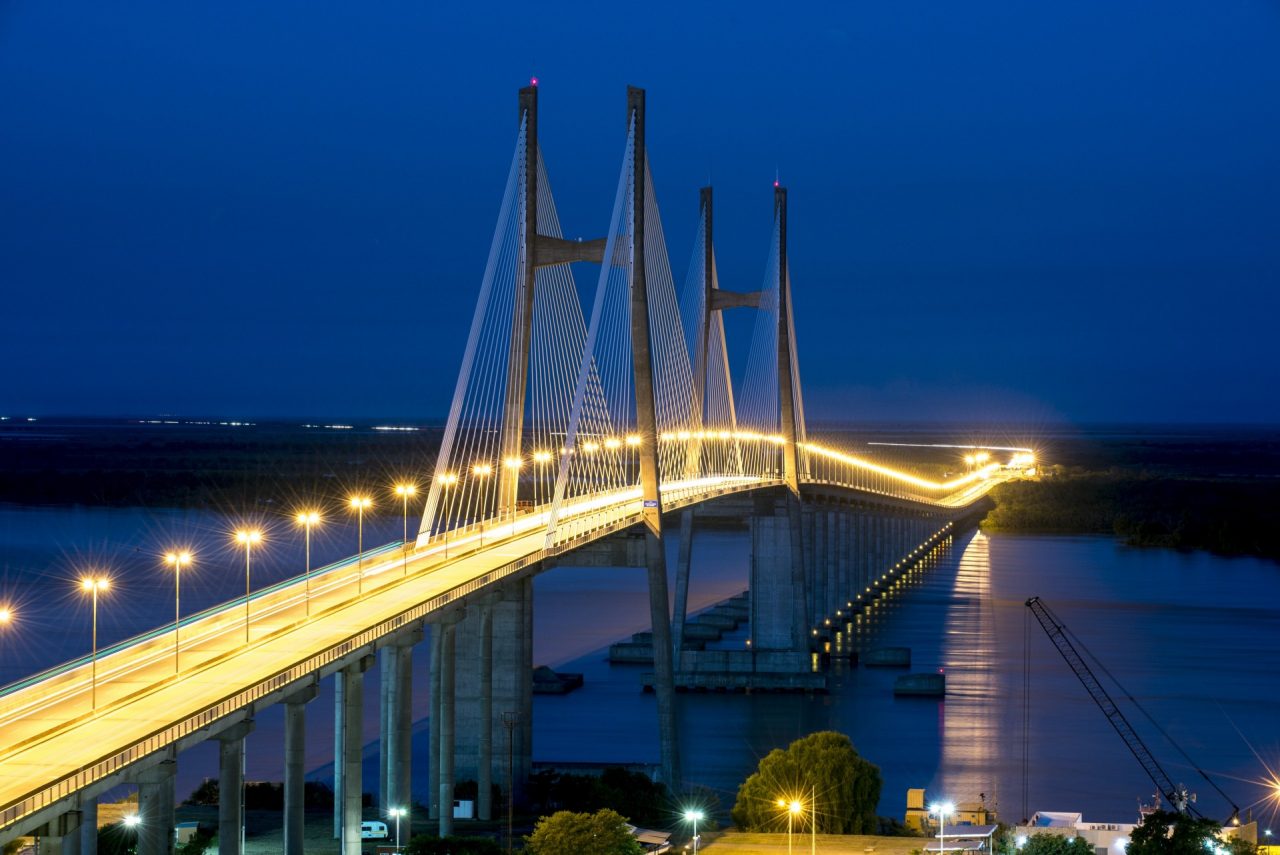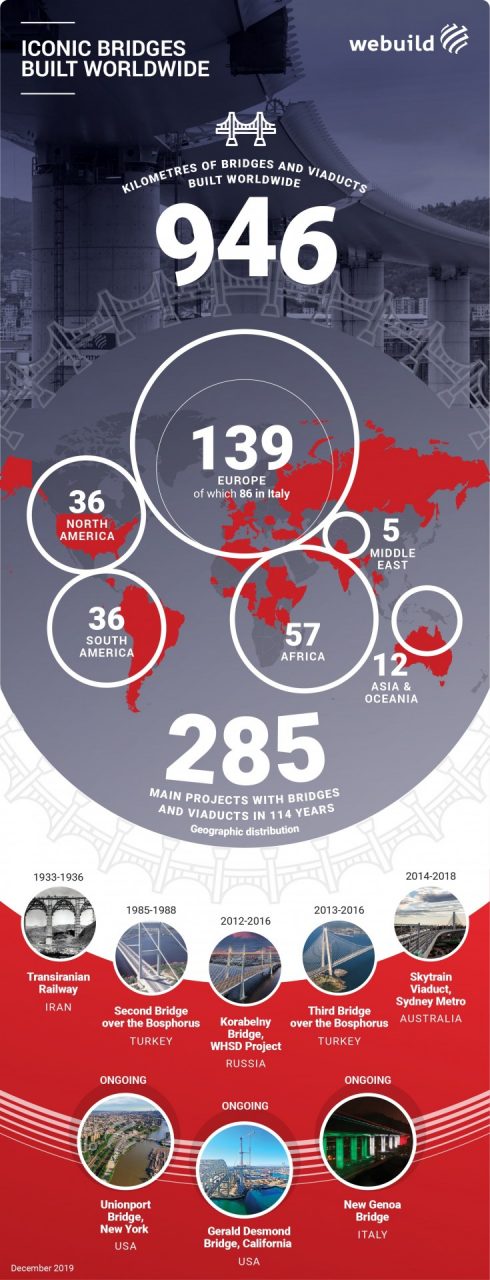The Bronx is one of the most traffic-congested boroughs in New York City. And like the rest of the city, much of its infrastructure is old and not up to the task of handling the Big Apple’s traffic, which has grown exponentially in recent years.
The new Unionport Bridge on the Bruckner Expressway crossing over Westchester Creek is on a crucial traffic artery in the Bronx. It is being built by Salini Impregilo (WeBuild) to replace the one inaugurated in 1953, which was designed to support a daily transit of 60,000
The Unionport is one of hundreds of bridges and viaducts built by Salini Impregilo (WeBuild) around the world. Placed side by side, these bridges and viaducts reach a total length of 946 kilometres (588 miles).
These infrastructure projects have become icons of a city or region, like the new bridge in Genoa, which is approaching its completion in record time. Or like the Skytrain in Sydney, which is a highly complex work of advanced engineering. Their impact is significant, especially because they help to overcome geographical barriers and allow regions and states to transport medicines, food, security services and territorial protection, which are particularly necessary in this Covid-19 emergency.
When Salini Impregilo’s (WeBuild) bridges are strategic for trade
In Long Beach, California, Salini Impregilo is currently completing the construction of a long-awaited bridge at the city’s immense port. The work replaces the old Gerald Desmond Bridge, inaugurated in 1968 and now inadequate to support traffic from Terminal Island to Long Beach. The bridge connects one of the most important commercial shipping terminals in the United States with the rest of the country.
The new Gerald Desmond Bridge, now close to completion, is a strategic work because 15% of the goods imported into the United States by sea are unloaded at the Long Beach port, and are then transported across the country.
Equally strategic for trade is the 608-metre (377-foot) cable-stayed Rosario-Victoria Bridge in South America, built by Salini Impregilo. The bridge, which stretches across the Rio Paranà, is a connecting route for the transport of four countries: Chile, Argentina, Uruguay and Brazil. The main bridge is part of a 59.4-kilometre-long (37 feet) stretch of viaducts and 12 smaller bridges that join the cities of Rosario and Victoria. It has made it possible to halve travel times on the much longer route previously taken by cars and trucks.

Modern and spectacular
From Australia to Latin America, from Europe to the United States, from Africa to Asia, bridges are important tools for development, and also often become icons imprinted in the collective imagination.
One of these iconic bridges is the Fatih Sultan Mehmet, the second bridge over the Bosphorus. In addition to its beauty and grandeur (the main span is 1,090 metres long, or 3,576 feet), it connects a 247 kilometre (153 long) long motorway linking the cities of Kinali, in Europe, to that of Kazanci in Asia. The bridge was built by Salini Impregilo (WeBuild) between 1985 and 1994 and in the seven years following its inauguration, trade between the surrounding areas increased 31.8%.
Or another example is the cable-stayed bridge on Sydney Metro’s 4.6 kilometre-long (2.8-mile) elevated skytrain viaduct on the new NorthWest line, where it runs between the Bella Vista and Rouse Hill areas. The bridge has received Australia’s top awards for innovation and sustainability, for its role in terms of infrastructure as well as for the design of construction techniques and materials to minimise environmental impact. The viaduct, which crosses a densely populated area of the city at an average height of 10-13 metres (32-42 feet) above ground, is part of a 23-kilometre (14-mile) line with 8 stations. The bridge is the most spectacular highlight of the fully automated Sydney Metro project, the major plan to invest in sustainable mobility for the city’s future.
Salini Impregilo’s (WeBuild) bridges: a story that comes from afar
Salini Impregilo’s expertise in the world of bridges stretches back to 1914, when one of the companies that would later form the Group built the Recco bridge, a railway viaduct connecting northern and central Italy. The bridge was destroyed by bombing during World War II and then rebuilt. In the 1930s, Salini Impregilo built the spectacular viaducts of the Trans-Iranian railway, one of the most incredible engineering works of the last century.
In over 114 years of history, the Group has built 285 projects that contain, in turn, hundreds of bridges and viaducts. Many of these are in Italy, such as the striking Sfalassà and Favazzina viaducts suspended between the Apennine mountains along the Salerno-Reggio Calabria motorway. And then in Colombia, in Brazil, and many other countries, where a new bridge becomes an opportunity for development and the tool of a collective drive towards the future.


